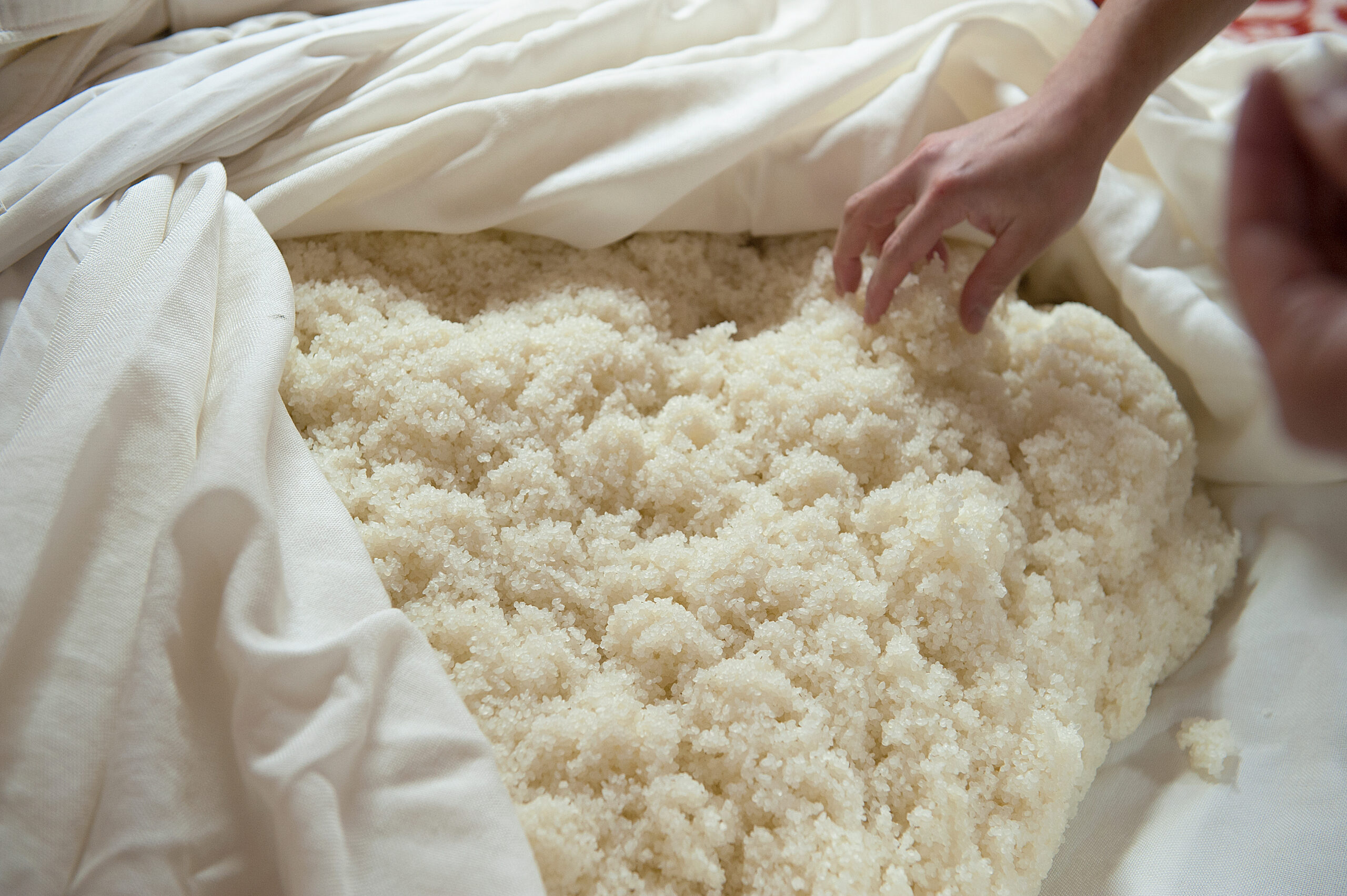When you sprinkle the spores of Aspergillus oryzae on rice or soybeans, white hyphae grow, and eventually, that “koji” is created. What exactly is the koji mold doing during this process?
In the previous article, we learned that koji is a “treasure trove of enzymes” and has the power to make food delicious. However, doesn’t it raise deeper scientific questions like, “Why can only koji mold produce so many enzymes?” and “How do those enzymes draw out umami and sweetness?” This article delves into the core of its life activities.
The Scientific Core Unraveled in This Expert Article
- The amazing genetic characteristics of Aspergillus oryzae
- The function and types of the three major enzymes (amylase, protease, lipase)
- The chemical process by which starch and protein are broken down and converted into sweetness and umami
- The difference between safe koji mold and its toxic relatives
Why is Koji Mold an “Enzyme Factory”? The Secret Hidden in the Genome
The ability of koji mold to produce a wide variety of enzymes in large quantities lies in its genetic information, its genome. As a result of the complete sequencing of the koji mold genome in 2005, it was revealed that koji mold has a significantly larger number of genes for enzymes that break down starch and protein compared to other related molds.
This is thought to be the result of koji mold evolving to adapt to the abundant carbohydrates such as rice in Japan’s humid environment and to efficiently use them as a nutrient source. It is truly a chosen microorganism that has walked alongside Japanese food culture.
Practical Edition: The Function and Chemical Process of the Three Major Enzymes
Among the more than 100 types of enzymes produced by koji mold, the following three major digestive enzymes are particularly important. Let’s take a look at the chemical reactions that produce “deliciousness.”
1. Amylase Group: The Magic that Turns Starch into Sweetness
Amylase is an enzyme that breaks down starch, the main component of rice and barley. Starch is a long chain of glucose molecules, but we don’t perceive it as sweet in that form. Amylase cuts this chain at various places, producing glucose and oligosaccharides, which are the source of sweetness.
| Amylase Type | Main Function | Role |
|---|---|---|
| α-Amylase | Randomly cuts the inside of starch (liquefaction) | Breaks down starch into smaller molecules, making it easier for other enzymes to work |
| Glucoamylase | Cuts glucose from the ends of starch (saccharification) | Produces strong sweetness (glucose) |
The reason amazake is surprisingly sweet is that these amylases thoroughly break down the starch in the rice, producing a large amount of glucose.
2. Protease Group: The Magic that Turns Protein into Umami
Protease is an enzyme that breaks down proteins such as those in soybeans. Protein is a long chain of amino acids, and glutamic acid, the source of umami, is one of them. Protease breaks down this protein chain, releasing various amino acids.
In particular, the deep richness and umami of miso and soy sauce are due to the abundant amino acids, including glutamic acid, produced by the breakdown of soybean protein by protease.
Learn More: Safe Koji Mold and Its Dangerous Relatives
A very close relative of koji mold (A. oryzae) is a mold called Aspergillus flavus. This mold is known to produce “aflatoxin,” a potent carcinogen. However, genome research has proven that in the long process of breeding, the gene cluster for synthesizing aflatoxin in koji mold has been lost or has become non-functional. We can use koji with peace of mind because of the empirical selection by our ancestors and the scientific proof of its safety.
Summary: Koji Mold is a Life Form that Designs Japanese Food
Koji mold is not just for fermenting food; it is a “food designer” that skillfully converts starch into sweetness and protein into umami with the abilities etched in its genes. By scientifically understanding its function, we can further unlock the infinite possibilities of koji.
Now that you have deepened your expert knowledge, why not actually experience the power of this wonderful microorganism in your kitchen with “A Guide to Using Koji and Making Amazake“?
References
- Koizumi, T. (2017). Fermented Foods Science. Chuokoron-Shinsha.
- Maebashi, K. (2019). Understanding Fermented Foods: The Science Behind Them. Gijutsu-Hyohron.
- Kitamoto, K. (2016). The Science of Koji. Kodansha Blue Backs.
- Ichishima, E. (2014). Koji Mold: National Fungus and Japanese Food Culture. Brewing Society of Japan.
- Tokyo University of Agriculture. (2019). Enzyme production mechanisms of koji mold. Research Report of Applied Bioscience.
- Ministry of Agriculture, Forestry and Fisheries. (2020). Traditional Japanese fermented foods and the role of koji.


